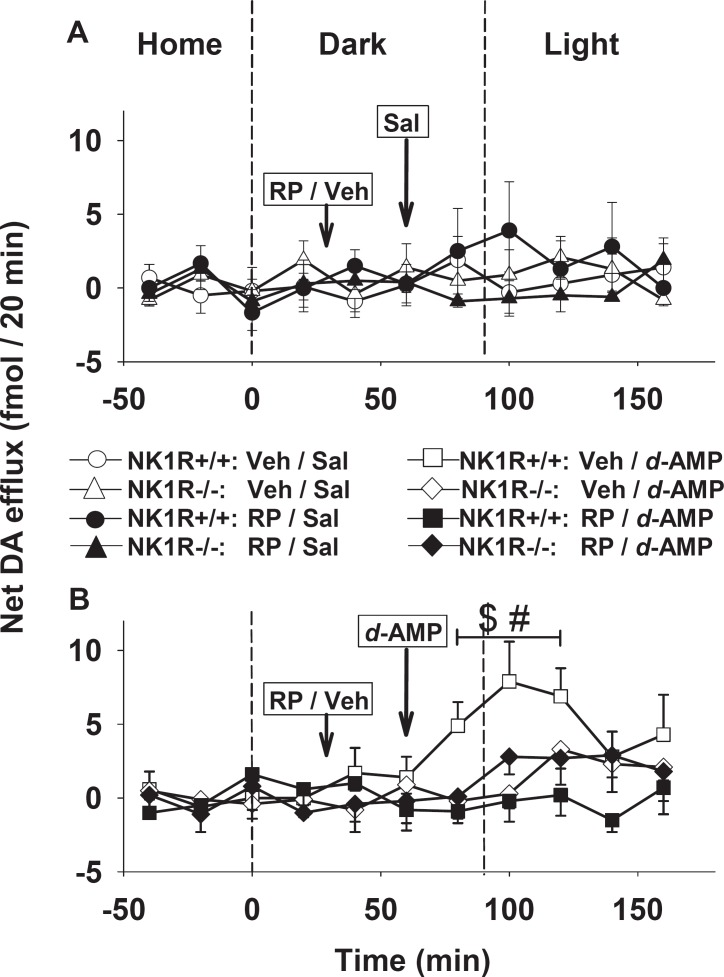Figure 3.
Effect of d-amphetamine on dopamine efflux in the dorsal striatum of NK1R+/+ and NK1R−/− mice. Stable basal efflux was first established in the home cage before the transfer of the mice to the dark zone of the LDEB for 90 min where they were given a first injection (at 30 min) of either vehicle (Veh: Tween 80 in 0.9% saline) or RP 67580 (‘RP’, 5 mg/kg. i.p.) followed by a second injection (at 60 min) of either (A) saline (sal) or (B) d-amphetamine (‘d-AMP’: 2.5 mg/kg i.p.), as indicated by the arrows. The mice were then transferred to the light zone of the LDEB. Points show mean ± s.e. mean efflux of the incremental increase (‘net’) from baseline: Net efflux was calculated, as described in Methods. The experiment was fully randomised across the eight groups but the data are illustrated in two graphs for clarity. Results were first analysed by multifactorial (three-way) ANOVA. When there was a difference in the main factors, or a relevant interaction between them, time-matched bins of data were compared using (post hoc) two-way repeated measures ANOVA (N = 3 or 4 per cell). Bins of data that differ by P ≤ 0.05 (or less) are indicated by the solid bar. (A) There was no difference in basal efflux in saline injected mice after treatment with RP 67580. (B) Comparison of efflux in the sample bin, T80-T120 (i.e. after treatment with d-amphetamine) with that of the three basal samples revealed an interaction between bin × genotype × RP/vehicle ($: F1,13 = 11.7; P < 0.01). Further, within the sample bin, T80-T120, there was a genotype × RP/vehicle interaction (#: F1,13 = 5.7; P < 0.05)

